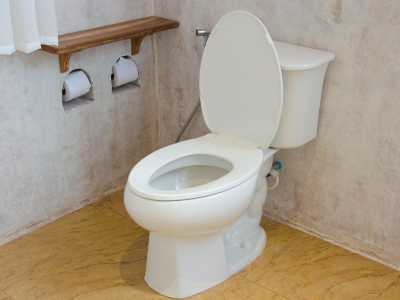Plumbing problems are a common occurrence in any household. From leaky faucets to clogged drains, these issues can cause inconvenience and frustration. However, with the right knowledge and tools, many plumbing problems can be solved without the need for a professional plumber.
In this blog post, we will discuss the top 5 common plumbing issues and provide DIY solutions to help you tackle them.

1. Leaky Faucets
A leaky faucet is not only annoying but can also waste a significant amount of water and increase your water bill. The most common cause of a leaky faucet is a worn-out washer. To fix this issue, follow these steps:
Step 1: Turn off the Water Supply
Before attempting to fix the leak, turn off the water supply to the faucet. This can usually be done by turning the valve under the sink clockwise.
Step 2: Disassemble the Faucet
Remove the handle of the faucet by unscrewing it. Then, use a wrench to loosen and remove the packing nut. Once the packing nut is removed, you can access the valve stem and the washer.
Step 3: Replace the Washer
Remove the old washer and replace it with a new one of the same size. Make sure to clean the valve seat before installing the new washer.
Step 4: Reassemble the Faucet
Reattach the packing nut and handle, and turn the water supply back on. Test the faucet to ensure the leak has been fixed.

2. Running Toilet
A running toilet can waste a significant amount of water and increase your water bill. The most common cause of a running toilet is a faulty flapper valve. To fix this issue, follow these steps:
Step 1: Turn off the Water Supply
Turn off the water supply to the toilet by turning the valve behind the toilet clockwise.
Step 2: Check the Flapper Valve
Remove the lid of the toilet tank and check the flapper valve. If it is damaged or worn out, it will need to be replaced.
Step 3: Replace the Flapper Valve
Remove the old flapper valve and replace it with a new one. Make sure to adjust the chain length so that the flapper valve can close properly.
Step 4: Test the Toilet
Turn the water supply back on and flush the toilet to ensure the issue has been resolved.
3. Clogged Drains
Drain problems are a common plumbing issue that can be caused by a buildup of hair, soap scum, or food particles. To unclog a drain, follow these steps:
Step 1: Use a Plunger
Place a plunger over the drain and push down and pull up repeatedly to create suction. This can help dislodge the clog.
Step 2: Use a Drain Snake
If the plunger does not work, you can use a drain snake to remove the clog. Insert the snake into the drain and turn the handle to break up and remove the clog.
Step 3: Use a Homemade Drain Cleaner
If the clog is caused by grease or food particles, you can make a homemade drain cleaner by mixing equal parts of baking soda and vinegar. Pour the mixture down the drain and let it sit for 15 minutes before flushing it with hot water.

4. Low Water Pressure
Low water pressure can be caused by a variety of factors, including clogged pipes, a faulty pressure regulator, or a water leak. To fix this issue, follow these steps:
Step 1: Check for Leaks
Check all the faucets and pipes in your home for any leaks. If you find a leak, it will need to be fixed before you can address the low water pressure issue.
Step 2: Clean the Aerator
The aerator is a small screen located at the end of the faucet. Over time, it can become clogged with debris, affecting water pressure. Remove the aerator and clean it with a brush and vinegar.
Step 3: Check the Pressure Regulator
If the pressure regulator is faulty, it will need to be replaced. This is a job best left to a professional plumber.
5. Water Heater Issues
A malfunctioning water heater can cause inconvenience and discomfort. The most common water heater issues include no hot water, not enough hot water, and strange noises. To troubleshoot these issues, follow these steps:
Step 1: Check the Pilot Light
If you have a gas water heater, check the pilot light to ensure it is lit. If it is not, follow the instructions on the water heater to relight it.
Step 2: Check the Thermostat
If you are not getting enough hot water, check the thermostat on the water heater. It may need to be adjusted to a higher temperature.
Step 3: Flush the Tank
Over time, sediment can build up in the water heater tank, affecting its efficiency. To flush the tank, turn off the water supply and attach a hose to the drain valve. Open the valve and let the water drain out. Once the water runs clear, close the valve and turn the water supply back on.
Conclusion
Plumbing issues can be a hassle, but with the right knowledge and tools, many problems can be solved without the need for a professional plumber. By following the DIY solutions provided in this article, you can save time and money and keep your plumbing in good working condition. However, if you are unsure or uncomfortable with tackling a plumbing issue, it is always best to call a professional plumber for assistance.
Engle Services offers comprehensive plumbing services, including leak detection and repair, water heater installation and repair, in
Sylacauga, Talladega, Birmingham, Shelby County (Hoover, Chelsea), Alabaster, Pell City, Dadeville, Wetumpka, Montgomery and all their surrounding areas.
Ready to schedule with our team of HVAC Technicians, Electricians, and Plumbers?
Schedule an appointment online or give us a call at (855) GET-ENGLE
